Birds will use their beaks for almost anything: to grab food, build nests, fight other birds, clean their feathers, or regulate their body temperature.
But have you ever imagined what birds would look like without beaks? In this article, with a little help of Photoshop, we will show you what 7 famous species of birds without beaks look like.
Table of Contents
Birds Without Beaks
Northern Cardinal

- Scientific name: Cardinalis cardinalis
- Lifespan: 3 years
- Wingspan: 10-12 in
Northern cardinals are medium-sized songbirds found in Southeastern Canada, the Eastern USA, Mexico, and parts of Central America. They inhabit woodlands, gardens, shrublands, and wetlands.
These beautiful orange-beaked birds with stunning head crests are sexually dimorphic. Male northern cardinals are bright red with black throats and faces while the females are mostly brown with reddish wings and tails.
Here’s what they would look like without beaks.
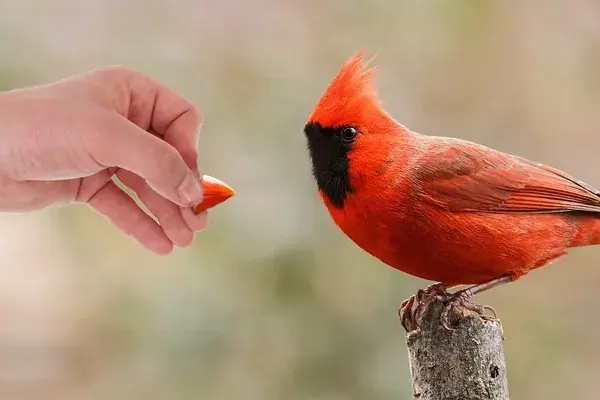
They are also known as redbirds and they get their red color from the food they eat – if there are not enough carotenoids in their food, they become brownish.
These birds are very territorial and aggressive – northern cardinals will often try to ferociously attack their reflections in the mirrors and windows.
Blue Jay

- Scientific name: Cyanocitta cristata
- Lifespan: 7 years
- Wingspan: 13–17 in
Common around forests, woods, parks, and other urban areas with large oak trees, blue jays are rather small blue songbirds.
Males and females are alike and have lavender-blue color above and white color below. They also have black collars and white tails and throats. Their wings are blue and have white spots.
Here’s their appearance with no beaks.
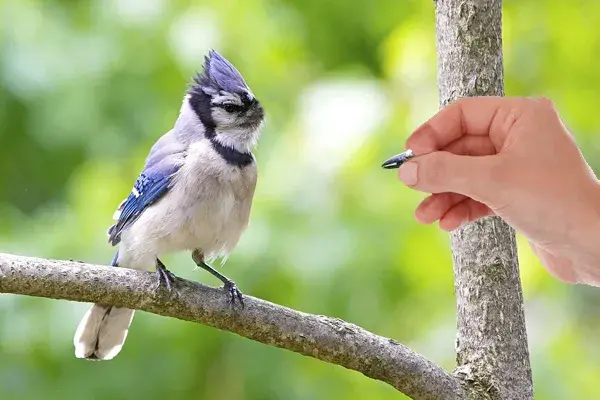
On top of their head, there is a crest that can be used to indicate the birds’ mood – when agitated, the crest goes up and when frightened, the crest goes down.
According to Bergmann’s rule stating that animals living in warmer areas tend to be smaller than those living in colder ones, blue jays from warm Florida weigh less (2.6 oz) than those from colder Connecticut (3.26 oz on average).
These noisy birds will often mimic hawk sounds when approaching a feeding site to drive away other birds. They make a large variety of sounds, may even learn to mimic human speech, and can even use tools.
They are not state birds in any US state; they are the mascot of Toronto Blue Jays, a Major League Baseball team.
Bald Eagle
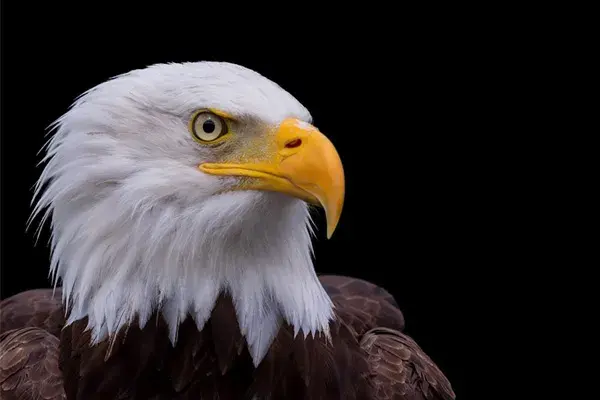
- Scientific name: Haliaeetus leucocephalus
- Lifespan: 20-30 years in the wild
- Wingspan: 70.8-90.5 in
Bald eagles are the national birds of the United States. They have brown bodies, white heads and tails, and yellow legs.
Here’s what a beakless bald eagle looks like. Not so scary anymore, eh?
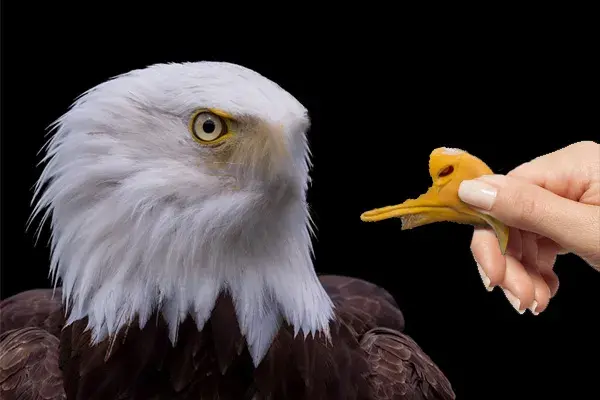
Before attaining these characteristics around the age of five, bald eagles are mostly dark brown with varying amounts of white mottling. They are most common around coastal areas and inland areas near water.
According to the Florida Fish and Wildlife Conservation Commission, Florida has one of the densest concentrations of bald eagles in the US, with over 1,500 pairs found there. They build one of the largest nests of any North American bird – the largest recorded one was in Florida and measured 10 feet wide and 20 feet deep.
These magnificent raptors are hard to miss as they soar through the air with their 7.5-foot-wide wingspan. Bald eagles are carnivores and opportunistic feeders that primarily consume fish they snatch from the water with their sharp talons.
Great Gray Owl
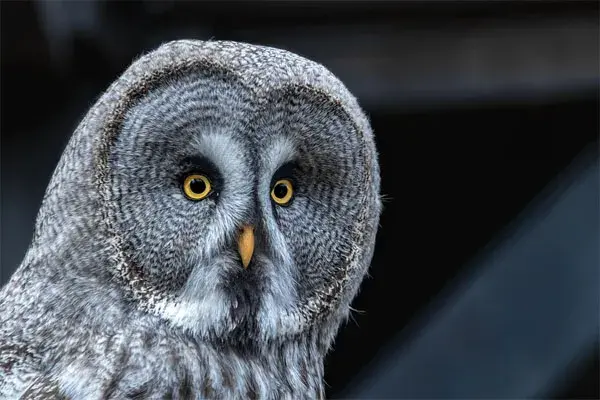
- Scientific name: Strix nebulosa
- Lifespan: 13-27 years
- Wingspan: 56-60 in
Great gray owls are the largest species of owls in the world by length. They are found in Europe, Asia, and North America, usually around coniferous forests, meadows, and bogs.
People know them under several names, including Phantoms of the North, bearded owls, sooty owls, etc.
Great gray owls have big forward-facing eyes on their large round heads. The eyes have yellow-colored irises with darker circles around them. Great gray owls are a very hard-to-spot species that hunt around dusk and dawn, mostly on voles.
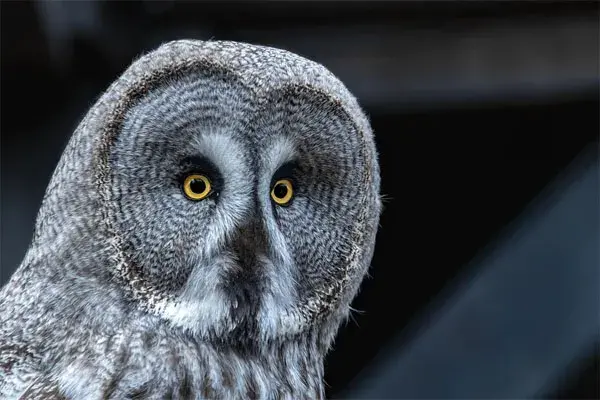
Although mostly silent, solitary, and stealthy, these raptors have been known to drive off predators as large as black bears when defending their nests.
Scarlet Ibis
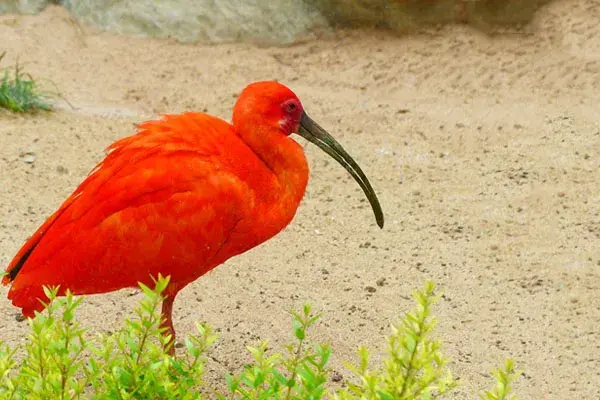
- Scientific name: Eudocimus ruber
- Lifespan: 32 years
- Wingspan: 21 in
Scarlet ibises are large birds native to South America and parts of the Caribbean Islands. They can be recognized by their long pink legs and necks, and partially webbed feet.
Here’s what would happen if they had no more of their long downcurved beaks.

As the name suggests, scarlet ibises are birds that are bright red (scarlet) colored. Their plumage can have different shades of red, pink, and orange; the wing tips are black.
They can be often spotted wading in shallow waters, probing mud and vegetation with their sensitive beaks in pursuit of food. These big red birds get their brilliant red color from carotenoids found in the crustaceans they consume.
Despite spending most of their time wading and walking on the ground, scarlet ibises are great fliers, highly migratory, and can cross long distances. They can be spotted in groups of 30 and more, flying in a classic V formation.
If you are interested in seeing more long-billed birds found in Florida, check out this fun article.
Toco Toucan

- Scientific name: Ramphastos toco
- Lifespan: 20 years
- Wingspan: 43-60 in
Toco toucans are the largest and most famous members of the toucan family. They are also known as giant toucans and common toucans and have black plumage with white throats and orange skin around their eyes.
Here’s what toco toucans would look like without their most prominent features.
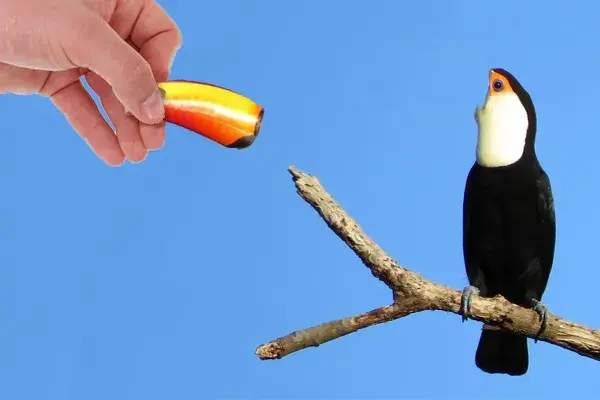
Toco toucans are not very good fliers and mainly travel among trees by hopping. They inhabit the semi-open habitats of central and eastern South America, countries like Bolivia, Peru, Argentina, Paraguay, and Brazil.
Toco toucans are omnivores that pluck fruit from trees and grab some insects, frogs, small birds, their eggs, and even small reptiles.
Mallard
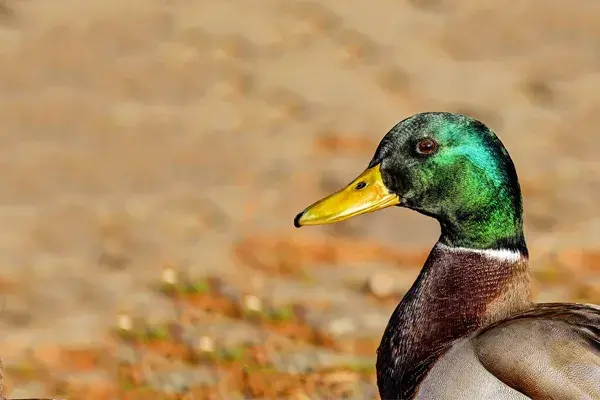
- Scientific name: Anas platyrhynchos
- Lifespan: 5-10 years
- Wingspan: 32-37.4 in
Mallards are large ducks and the ancestor of nearly all domestic duck breeds. They are common near shallow ponds and lakes and are rather easy to recognize.

Male ducks have dark green heads and white collars while females and juveniles have mottled brown plumage.
Females make a duck-like quack, males do not. Instead, males produce deeper, raspier one and two-note calls or rattling sound by rubbing their bills against their flight feathers.
A male Mallard is called a drake and a female is a hen. Mallards fly fast and swim well – they have a 3 ft wide wingspan and can reach a top speed of 70 mph!
Summary
This concludes our list of birds without beaks. We hope you found it interesting; if you did, make sure to share it with your friends and family.